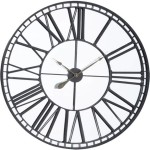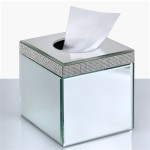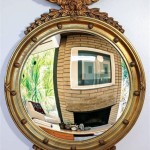How Wide Should Bathroom Light Be Above Mirror?
Proper bathroom lighting is a crucial element in both functionality and aesthetics. When planning or renovating a bathroom, the placement and size of the lighting fixtures above the mirror are particularly important. Achieving the optimal width of the light fixture ensures even illumination, reduces shadows, and enhances the overall visual appeal of the space. This article delves into the factors that determine the ideal width of a bathroom light above the mirror, exploring various considerations to facilitate well-informed decision-making.
The primary function of bathroom lighting is to provide adequate illumination for tasks such as shaving, applying makeup, and grooming. Shadows can significantly impede these activities, making it essential to select and position lighting fixtures that minimize their occurrence. The width of the light fixture plays a critical role in achieving this goal. A fixture that is too narrow may cast concentrated light, creating harsh shadows, while a fixture that is too wide might overpower the space and result in uneven distribution of light. Therefore, understanding the various factors that influence the ideal width is essential to creating a functional and aesthetically pleasing bathroom.
The optimal width of the bathroom light above the mirror is not a one-size-fits-all solution; it depends on several factors related to the mirror's dimensions, the overall bathroom size, the type of lighting fixture used, and the desired aesthetic. Careful consideration of these aspects will ensure that the chosen light fixture effectively illuminates the space without detracting from the overall design.
Mirror Dimensions: The Foundation for Width Selection
The most crucial factor in determining the appropriate width of the bathroom light is the dimensions of the mirror. Ideally, the light fixture should be approximately the same width as the mirror or slightly shorter. This ensures that the light is distributed evenly across the face, minimizing shadows and providing consistent illumination. If the light fixture is significantly shorter than the mirror, it may result in uneven lighting and leave portions of the face shadowed. Conversely, if the fixture is considerably wider than the mirror, it might appear disproportionate and overwhelm the space. A light fixture that extends beyond the mirror, particularly significantly, can even create glare.
For a single vanity mirror, the light fixture should ideally be between 75% and 100% of the mirror's width. For instance, if the mirror is 36 inches wide, the light fixture should ideally be between 27 and 36 inches. This range provides a balanced distribution of light without overpowering the mirror or the surrounding area. If a longer fixture is desired for aesthetic reasons, ensure that the additional width is proportional to the overall size of the bathroom and that the light output is appropriately diffused to prevent glare and uneven distribution. In smaller bathrooms, a shorter fixture may be more appropriate, even if it falls slightly below the 75% threshold.
When dealing with double vanities and separate mirrors, the approach is slightly different. In this scenario, each mirror should have its own dedicated light fixture. The same principle applies: the width of each light fixture should be approximately 75% to 100% of the corresponding mirror’s width. This ensures that each user has adequate and evenly distributed light for their grooming needs. Avoid using a single, long light fixture spanning both mirrors, as this often results in uneven lighting and does not account for the individual needs of each user. This type of lighting can create shadows on one face, which would be detrimental. A better alternative would be separate lights over each mirror.
Furthermore, the orientation of the mirror influences the width consideration. A wide, rectangular mirror benefits from a wider light fixture to provide horizontal illumination. Conversely, a taller, narrower mirror might require a more compact fixture or vertical sconces flanking the mirror to achieve balanced lighting.
Bathroom Size and Configuration: Maintaining Proportionality
The size of the bathroom plays a significant role in determining the overall scale and proportion of the lighting fixtures. In a small bathroom, a large, wide light fixture can feel overwhelming and visually shrink the space. In contrast, a small light fixture in a large bathroom might appear insignificant and fail to provide adequate illumination. The goal is to maintain a sense of balance and proportion to enhance the overall aesthetic appeal of the bathroom.
In smaller bathrooms, consider using a narrower light fixture or opting for vertical sconces mounted on either side of the mirror. Sconces are a particularly effective solution in compact spaces, as they provide targeted illumination without taking up excessive horizontal space. Alternatively, a compact light bar extending approximately 60% to 75% of the mirror’s width can provide sufficient light without overwhelming the room. The key is to select fixtures that are appropriately scaled to the bathroom’s dimensions and that provide adequate light output without creating glare or hot spots.
Larger bathrooms offer more flexibility in terms of fixture size. A wider light fixture can be used to fill the space above the mirror, creating a more visually balanced and sophisticated look. However, it is important to ensure that the light output is evenly distributed and that the fixture does not overpower the mirror or the surrounding décor. Consider using a dimmer switch to control the light intensity and adjust it according to the specific needs and preferences. This becomes especially important when you have multiple light sources in the bathroom.
The bathroom's configuration also influences the ideal width of the light fixture. If the mirror is positioned between two walls or cabinets, the available space for the light fixture may be limited. In such cases, it is crucial to measure the space precisely and select a fixture that fits comfortably without appearing cramped or squeezed. Conversely, if the mirror is positioned on a large, open wall, there is more flexibility in terms of fixture size and placement. Consider the overall layout of the bathroom and the surrounding elements when determining the optimal width of the light fixture.
Lighting Fixture Type and Technology: Impact on Illumination
The type of lighting fixture used significantly impacts the distribution and quality of light. Different types of fixtures offer varying degrees of illumination and aesthetic styles. Understanding the characteristics of each type is crucial for selecting the optimal fixture for the specific needs of the bathroom.
Light bars, also known as vanity lights, are a common choice for bathroom lighting. These fixtures typically consist of a horizontal bar with multiple light bulbs or LEDs. They provide even illumination across the face, minimizing shadows and creating a flattering light. The width of the light bar should generally adhere to the 75% to 100% rule relative to the mirror’s width. However, the specific dimensions may vary depending on the number of bulbs, the type of bulbs used, and the overall design of the fixture.
Sconces, as mentioned earlier, are another popular option, especially for smaller bathrooms or for creating a more decorative lighting scheme. Sconces are typically mounted on either side of the mirror, providing targeted illumination. When using sconces, the width is less of a concern than the height and placement. The sconces should be positioned at eye level to ensure that the light is directed appropriately and that shadows are minimized. The distance between the sconces should be approximately the same as the width of the mirror to maintain visual balance.
Recessed lighting, while not directly above the mirror, can complement the primary lighting and contribute to overall illumination. Recessed lights can be strategically placed to provide ambient lighting and fill in any dark spots or shadows. When using recessed lighting in conjunction with a light fixture above the mirror, it is important to ensure that the two types of lighting are compatible in terms of color temperature and intensity. This will prevent the creation of conflicting light sources and maintain a cohesive and balanced lighting scheme.
The type of light source also plays a vital role in the quality of light. LED bulbs are increasingly popular due to their energy efficiency, long lifespan, and ability to produce a variety of color temperatures. Select LED bulbs with a color temperature that is appropriate for the bathroom. A color temperature of around 3000K to 4000K is generally recommended, as it provides a warm, natural light that is flattering for grooming tasks. Avoid using bulbs with excessively high or low color temperatures, as they can distort colors and create an unnatural or unflattering light. Consider the Color Rendering Index (CRI) of the bulbs; a higher CRI indicates better color accuracy, essential for tasks such as makeup application.

Guide To Hanging Bathroom Vanity Lighting And Mirrors Liven Design

Your Guide To Bathroom Lighting

Bathroom Light Fixtures Guide Lights Com

How High To Place Your Bathroom Fixtures Inspired Style

Your Guide To Bathroom Lighting

How To Choose The Right Size Lighting Fixture Lights Com

How High To Place Your Bathroom Fixtures Inspired Style

How High To Place Your Bathroom Fixtures Inspired Style

Bathroom Light Fixtures Guide Lights Com

Vanity Light Height The Home Depot








